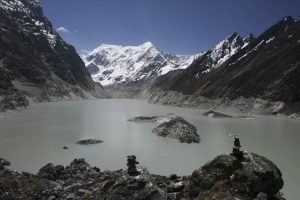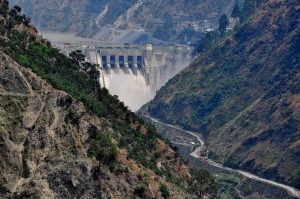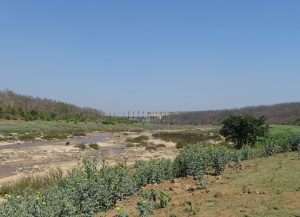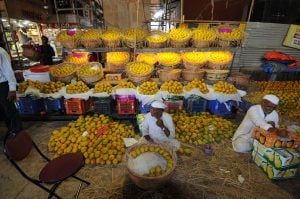If good sense had not dawned upon the timber smugglers of central Kashmir’s Budgam district, they would have stripped their forest totally bare.
It was in 2010 when the timber smugglers of Sitharan and adjoining areas in Budgam started to realise that their two-decade career was not sustainable. But they did not know of any other way to make a living in this part of the Pir Panjal range in the Himalayas.
“All of us are extremely regretful about the way we cut our green gold and sold it off for peanuts,” Javid Ahmad, who claimed to have cut more than 100 trees alone, told thethirdpole.net. “Those were days of ignorance. Today, if we see someone cutting a tree, we will slit his throat.” He said that they used to sell off a piece of log measuring around three cubic feet for a paltry INR 300 (USD 4.45).
Over half a million full-grown trees were cut down in this area from 1990 to 2010, Ahmad and other former timber smugglers said. Mohammad Ramzan, who is in his 60s, recalled that there used to be dense forests two decades before, but there are hardly any trees left now.
“Everything was alright before the armed conflict started in 1989 in Kashmir. Now, look at those denuded areas of Krala Sangri, Ramunhar, Pareezapan, Zam Pathar, Baerbal Damdam,” Ramzan said.
“I remember, every day timber was loaded upon over 1,000 horses for carrying it to saw mills. Even the army officers would take their own share of the loot when smugglers would come in contact with them.”
![Mohammad Ramzan shows the deforested areas in and around Tosamaidan [Image by Athar Parvaiz]](/wp-content/uploads/2016/06/Mohammad-Ramzan-can-count-the-number-of-degraded-forest-areas-at-his-finger-tips-Athar-Parvaiz.jpg)
So what caused the turnaround? “The idea of selling the charms of our beautiful surroundings to tourists changed us into conservationists. Besides, we had become notorious. People in the plains would treat us with contempt,” Ahmad said.
The rash of criminal cases filed against them contributed to the change of mind. The police and forest department officials were trying hard to re-establish their writ in an area that became so notorious at the height of the insurgency that locals started to call it Little Afghanistan.
After this phase, tourism in the Kashmir Valley started to revive in 2010, and the timber smugglers saw an opportunity. On the slopes just above their villages was Tosamaidan, a stunningly beautiful 375-acre meadow.
The villagers knew their meadow had huge tourism potential. Hordes of tourists throng Kashmir’s Gulmarg and Sonamarg meadows all the time, and Tosamaidan is at least as beautiful.
But the problem was that the Indian Army used Tosamaidan for artillery exercises every day. The sound was deafening when the exercises went on. Sometimes long after the firing, unexploded shells went off, killing and maiming many villagers.
In 1964, the state government of Jammu and Kashmir had leased the meadow to the army for 50 years. The villagers knew they had a chance. They would need to lobby the government not to renew the lease after 2014.
Led by the former timber smugglers, the residents did just that. Their lobbying expanded into a large campaign towards the end of 2013. Environmentalists and civil rights groups joined them. Using India’s powerful Right to Information law, activists were able to request the authorities about the details of deaths and disabilities in the area surrounding Tosamaidan, helping to spur action.
It worked. The lease was not extended, and the army was asked to remove left-over artillery shells. After all that was done, in late May this year Tosamaidan was officially thrown open for tourists by Chief Minister Mehbooba Mufti.
![Residents have started their own tree plantation drive [Image by Athar Parvaiz]](/wp-content/uploads/2016/06/Local-youth-have-now-started-afforestation-in-the-area-Photo-by-Athar-Parvaiz.jpg)
Zareef Ahmad Zareef, a prominent Kashmiri poet, satirist and civil rights activist, said that the use of such a beautiful place for artillery exercises had not only deprived the villagers of Budgam of decent incomes through tourism, but had also compelled most of them to resort to timber smuggling. Villagers said Zareef was a great support to them during the campaign.
Zareef told thethirdpole.net, “It is a tragedy that all our economic resources have come under the influence of security forces. But, freeing Tosamaidan of ammunition is the best example of letting people cash on the naturally existing economic opportunities that Kashmir has.”
![<p>The effects of timber smuggling in and around Tosamaidan meadow in central Kashmir [Image by Athar Parvaiz]</p>](https://dialogue.earth/content/uploads/2016/06/One-of-the-deforested-patches-in-Sitaharan-Athar-Parvaiz.jpg)





